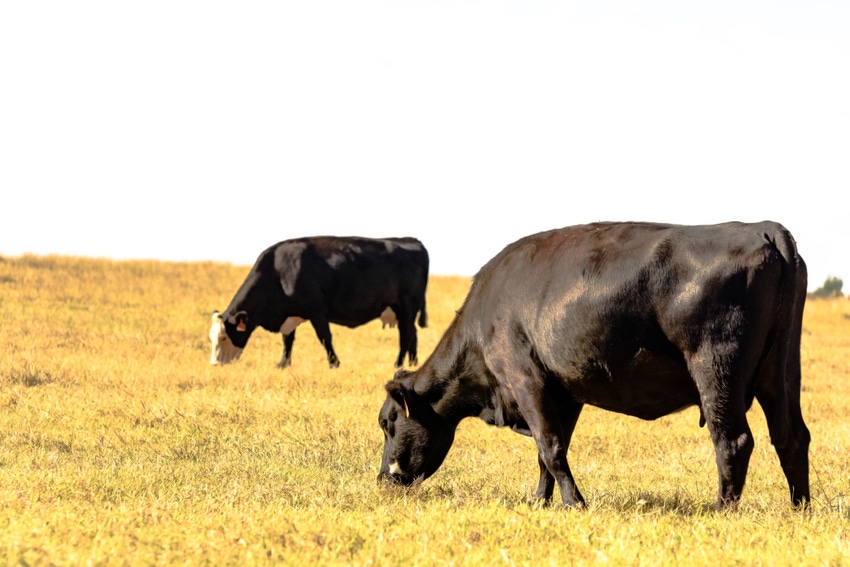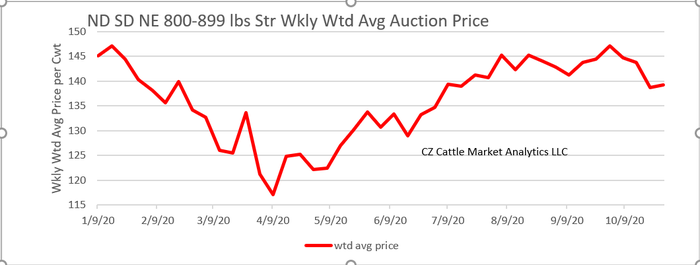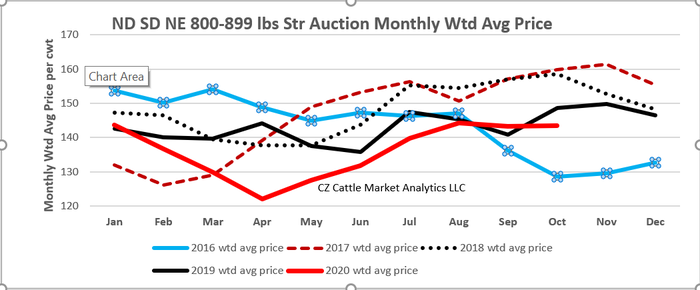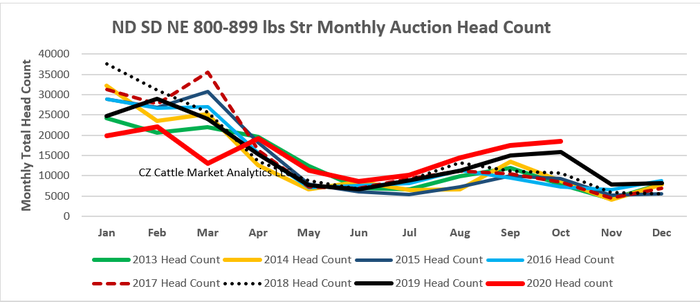Price comparison: Northern Plains feeder cattle trends
Prices are generally holding steady as the fall run continues.

Northern Plains feeder cattle prices have been rebounding higher but lately have leveled out more for the yearling monthly average, but the lighter-weight calves dropped lower which is often normal during the very big fall runs. However, while feeder prices have improved quite a bit from the bottom set during March and April, they are not climbing as high as prices were last year during the fall.
The weekly combined total for all reported auctions in North Dakota, South Dakota, and Nebraska for Medium and Large 1 and 1-2 steers weighing 800 to 899 pounds showed 2,849 head for the week ending Oct. 30, compared to 2,243 head the previous week.
The weekly Oct. 30 combined weighted average price for these three states showed $139.29 per cwt for those 2,849 head that had a weighted average weight of 8,65 pounds. That compares with $138.74 the previous week that weighed 854 pounds. That weekly price had dropped down to $117 early in April during the pandemic so at least a big rebound but then dropped down a little.

Like previously mentioned, the monthly average graph shows more leveling going on now but still below last year during October when these heavier weights have a good chance to be finished prior to the big June drop in fed cattle prices.

Also, the monthly average head count graph shows the normal seasonal changes in volume and how it compares to previous years.

When you compare the Northern Plain prices to the Southern Plains with exactly the same reported grading, you can see how much higher prices are in the north. The main reason for the higher prices is that feed costs are much lower in the northern areas which is why during the last years several large feedlot companies expanded into the north.
A good measure of the feed prices is the fact that in the Texas Panhandle, the price for corn is usually $1 higher per bushel than the futures compared to many places in the north that are lower than the futures price. Also the Southern Plains usually has slightly higher numbers of feeders grading 1-2 because some cow-calf operations use breeds that are tolerant to hot temperatures. The Medium and Large 1-2 calves usually have slightly lower prices than Number 1.

My feeder cattle study uses all of the USDA reported feeder cattle auctions from the Southern Plains and the Northern Plains. It includes all USDA reported auctions in Kansas, Oklahoma, and Texas for the Southern Plains as well as North Dakota, South Dakota and Nebraska for the Northern Plains.
The data include only the reported Medium and Large No. 1 as well as 1-2 feeder steers and heifers but now includes all flagged items like fleshy or thin because the CME has started that procedure. It utilizes only weighted average calculations and not simple average.
Czerwien, retired as an auction market manager and USDA market reporter, does market analytics from his home in Amarillo, Texas.
About the Author(s)
You May Also Like





